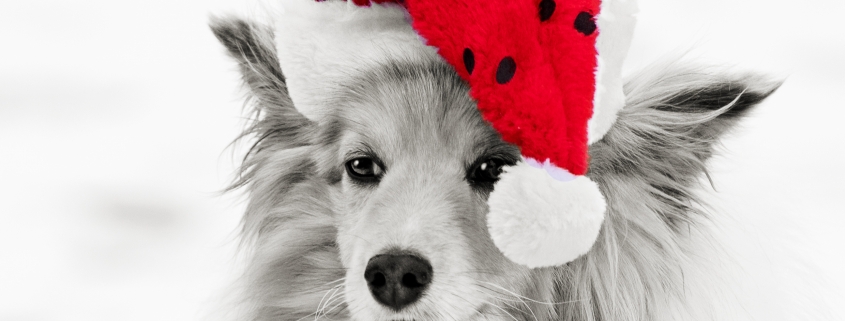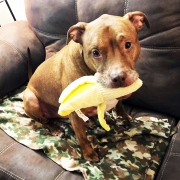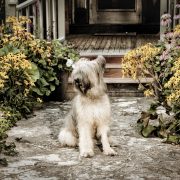Shelties: Multi-Talented Little Dogs
By PAMELA STACE
They look like miniature Collies, but the Shetland Sheepdog or Sheltie is a completely separate breed developed to herd sheep, poultry and ponies in the rugged terrain of the Shetland Islands between Scotland and Norway. Like Shetland Ponies and Shetland Sheep, these dogs were bred to be compact so that they would eat less and therefore be easier for farmers to keep in a location where food was not always in abundant supply.
History
The origins of the Shetland Sheepdog are somewhat unclear, but it is believed that the foundation of the breed was a Northern Spitz-type herding dog brought from Scandinavia as early as the 10th century. It is thought that these dogs were subsequently crossed with Pomeranians, King Charles Spaniels and other indigenous dogs of the islands. Later, rough-coated Collies were added to the mix for the sake of breed uniformity. Shelties were also known as Liliputian Collies, Toonie (farm) Dogs and Fairy Dogs. In the 19th century, Shetland Islanders began selling Sheltie puppies to tourists, and Shelties became known to the rest of Great Britain. Recognized by the AKC in 1911, almost all Shelties in the U.S. today are descended from dogs brought here between World War I and World War II. In the 1970s, the Sheltie became enormously popular and has remained that way. In 2017, the Shetland Sheepdog ranked 24 out of 194 AKC breeds.
What Makes a Sheltie a Sheltie
The Sheltie is a smart, agile and sturdy dog with a pointy, expressive, fox-like face. They have a harsh and straight outer coat that repels dirt and water, and a dense undercoat which makes them well-suited for life in a harsh climate. Like all herding dogs, a Sheltie wants a job to do. They are eager to please and like to be busy, or they may become depressed. They are vocal and energetic and are sometimes prone to excessive barking, but they respond well to gentle, consistent training. Shelties are sensitive and affectionate and tune themselves into the family dynamic. They want to be with their humans and are often protective of them. They are good watchdogs. Debra Krajec, the owner of three Shelties, told me how 15-month-old Toby often barks and reacts to strangers as if to protect her on their walks. And Marlene Sadrow Carew, the owner of our cover dog, 5-year-old Merlot, mentioned how Merlot will bark to keep her son’s cat away from the dinner table.
A Multi-Talented Little Dog
Shelties enjoy many dog sports and other canine activities. They excel at agility, rally, lure coursing, conformation, herding trials, and especially obedience. They learn tricks easily. Their intelligence and sensitivity also makes them perfect therapy and service dogs. Merlot is extremely popular as a therapy dog in Florida, where she is in high demand at hospitals, assisted living centers and hospices. This past fall, Marlene and Merlot received a request to visit Panama City after Hurricane Michael’s devastating destruction. Marlene wheeled Merlot in a stroller, where she could easily be seen and interact with the survivors there.
Health Issues
Shelties are generally very healthy, but rarely, some health issues may occur. These include thyroid, liver, and kidney trouble, Collie eye anomaly, hip dysplasia, and epilepsy.
Home Environment
Shelties are highly adaptable and can thrive in either a rural or urban setting. Being with the people they love is what is most important to them! They are good with kids and other pets, although sometimes this becomes problematic when they can’t stop herding them!
A Mutual Devotion
Maybe because Shelties are so loyal sweet and playful, Sheltie owners are just as devoted to their dogs as their dogs are to them! Marlene takes Merlot, her “little princess,” with her wherever she goes. “She’s my therapy, and I’m her therapy,” she says.
Right from the start, Debra knew that this was her breed. “When I see Shelties, I just melt,” she says.
Links
The Wisconsin Sheltie Rescue was established in 1995. It is an all-volunteer group that exists to educate the public about the breed, and find homes for Shelties in need. www.wisheltierescue.com
The American Shetland Sheepdog Association (ASSA) is the AKC parent club for Shelties. americanshetlandsheepdogassociation.org
Stats
Homeland: Shetland Islands between Norway & Scotland.
Original Job: Being a farm dog & herding sheep, poultry & ponies.
Size: 13-16 inches, 15-25 lbs.
Coat Colors: Sable, black & blue merle with varying amounts of white or tan coloring.
Grooming: Regular brushing, nail trimming, & teeth brushing. Occasional bathing. Heavy seasonal shedding of the undercoat.
Exercise: Moderate exercise with an occasional good romp.
Lifespan: 12-13 years.











